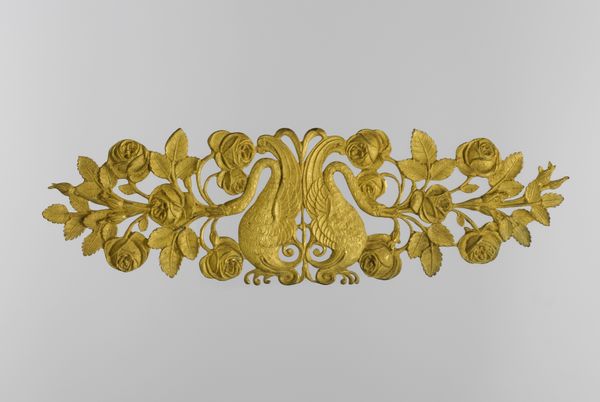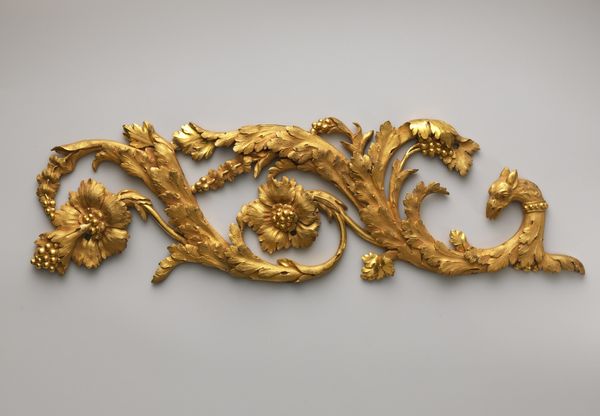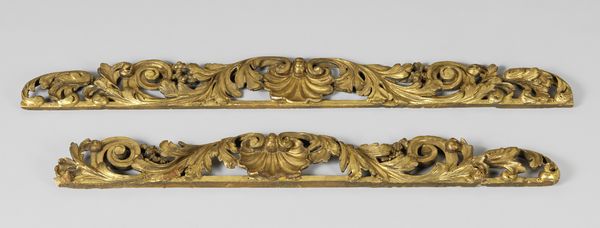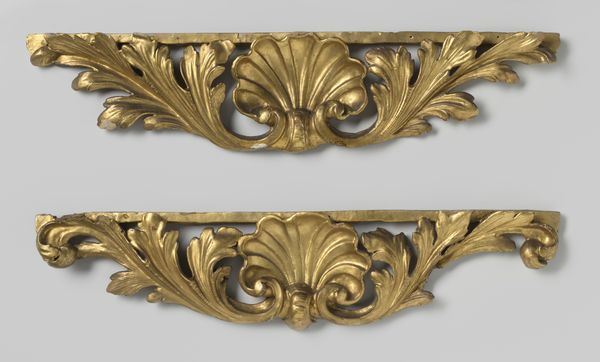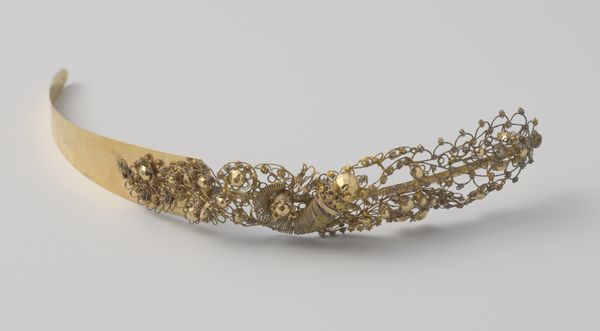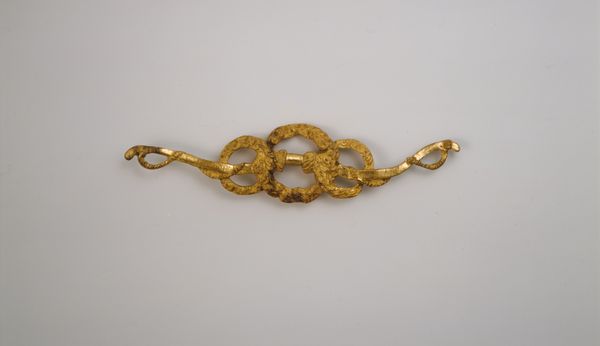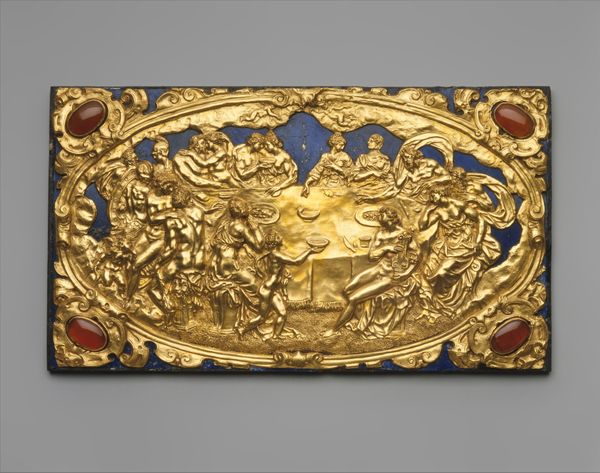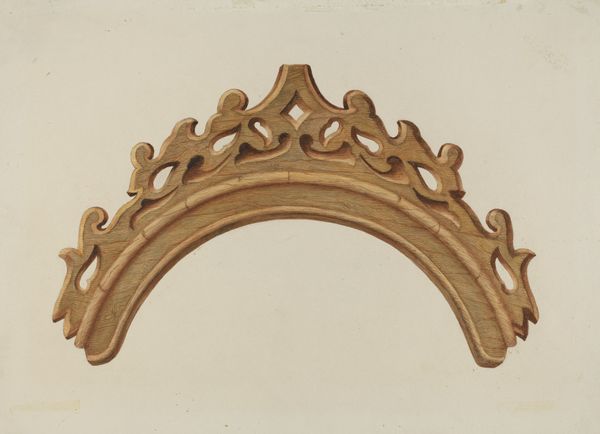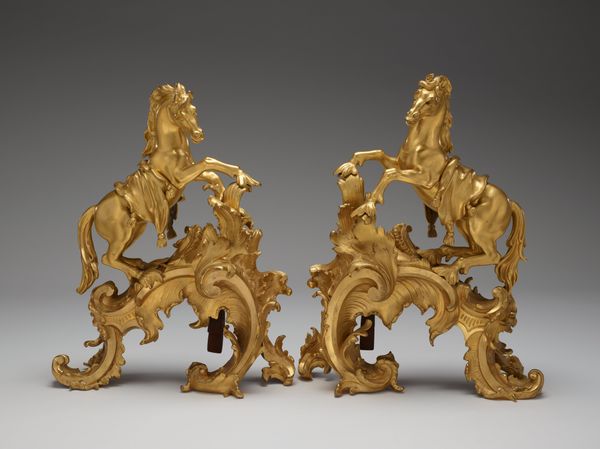
brass, carving, gold, relief, sculpture
#
neoclacissism
#
brass
#
decorative element
#
carving
#
gold
#
relief
#
round design
#
sculptural image
#
3d shape
#
sculpture
#
decorative-art
Dimensions: 9 3/4 x 2 1/8 in. (24.8 x 5.4 cm)
Copyright: Public Domain
Curator: Elegance captured in metal! This is "Swans and Fountain Appliqué," dating from between 1805 and 1835. The craftsmanship displayed is incredible, using carved and gilded brass to create a Neoclassical decorative element. Editor: Striking! The stylized swans and fountain rendered in gleaming gold evoke such opulence. There is an odd, drippy quality about the basin though that feels out of place and vaguely unsettling. Curator: I agree. Its original location is not clearly known, so interpreting the artist’s intention proves quite challenging. One can suppose it could have adorned furniture or perhaps even a grand doorway in a wealthy home, bringing connotations of social status. Editor: The swans themselves are deeply symbolic, historically linked with grace, beauty, love, and purity. Consider that these attributes would immediately transfer to the home, bestowing the commissioner with some sense of grandeur. Then there is the question of how it reflects societal standards, the power of imagery and how it functioned at the time. Curator: Yes, such symbolism would resonate within its intended audience, as that era greatly valued signs and symbols for more than decorative value, creating social codes through imagery. However, the artistic and artisanal training happening at the time would reflect not just stylistic choices but social norms and access. Editor: Indeed, and while the Neoclassical style references classical antiquity, the golden finish elevates this beyond a mere reproduction. Instead, the application of this golden hue transforms the entire visual, creating associations of luxury, privilege and power dynamics. The cascade of 'water' coming out of the vase could also refer to transformation. It is tempting to think the symbolism indicates a changing order. Curator: A fascinating consideration! It truly highlights the complex interplay between art, history, and social class. Thinking about where it sits now, it almost serves as a record or symbol of that kind of thinking. Editor: Absolutely. And understanding those symbolic layers lets us engage with the artwork in a much richer, more meaningful way.
Comments
No comments
Be the first to comment and join the conversation on the ultimate creative platform.
